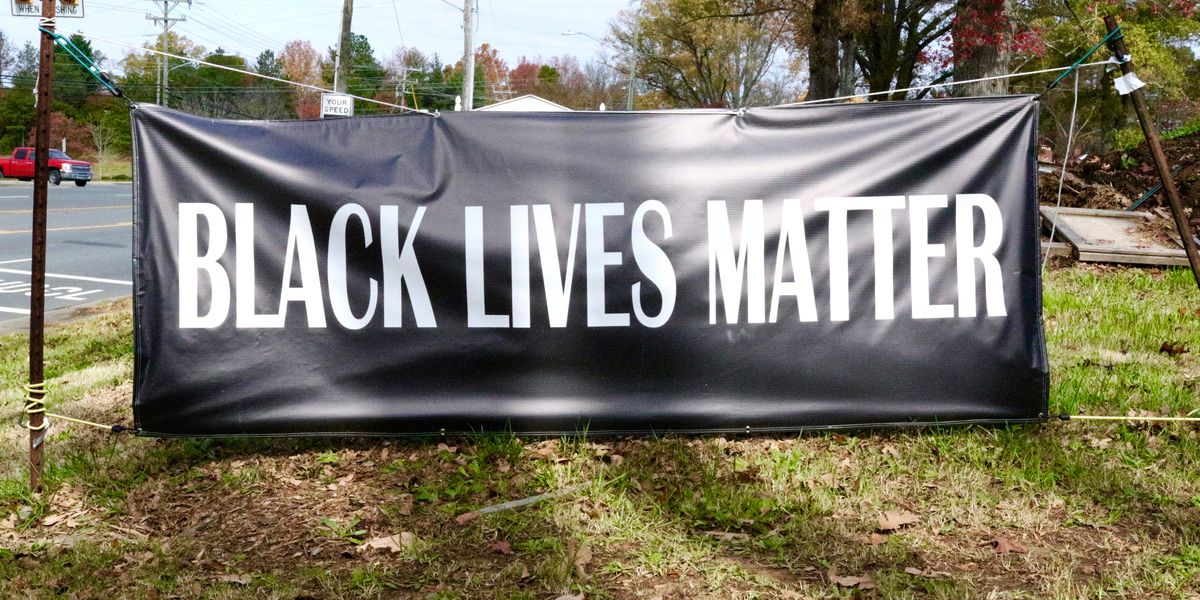How to Support the Black Dance Community, Beyond Social Media
The dance community’s response to the death of George Floyd was immediate and sweeping on social media. Dance artists, including Desmond Richardson and Martha Nichols, used their social platforms to make meaningful statements about racial inequality. Theresa Ruth Howard‘s leadership spurred ballet companies including Dance Theatre of Harlem, American Ballet Theatre, and New York City Ballet to pledge that #BalletRelevesForBlackLives. Among the most vocal supporters have been dance students, who continue to share the faces and gut-wrenching last words of Black men and women who have died in police custody on their Instagram feeds and Stories.
The work being done on social media as a community is important and necessary—and we should keep at it. But now, that momentum must also carry us into taking action. Because to be a true ally, action is required.
A responsible ally amplifies Black voices. They choose to listen rather than speak. And they willingly throw their support, and, if they can, their dollars, behind Black dancers and Black dance organizations. Here are some ways you can do your part.
Attend a Dance Class Fundraiser
Fundraising classes are a win-win experience: you get to train with master teachers and choreographers, and your donation goes to furthering causes that help propel Black artists. Here are a few options:
- Dancer and choreographer Nathaniel Hunt’s RISE. REFLECT. RESTORE virtual fundraiser, running June 5–7, will include a variety of dance, yoga, and fitness classes, in addition to powerful performances and probing conversations. Participants are encouraged to donate what they can, with all proceeds going to NAACP and Color of Change.
-
Peridance Capezio Center
will host a full week of online classes starting June 6, with funds raised going to organizations that fight against racial inequality. -
Gibney Dance
will donate all online class revenue through the end of June to organizations on the front lines of the effort. - Former Nederlands Dans Theater dancer Spenser Theberge will teach three ballet classes this week, and all proceeds will go to the organization Color of Change.
-
Martha Graham Dance Company
is offering all revenue from this week’s online classes to the Minnesota Freedom Fund. - Instagram account Movement for Hope is hosting classes all week, with the proceeds going to a different organization fighting for equality each day.
- Next week, the “Cindies Ballet Class” (with ABT principals Isabella Boylston and James Whiteside) will be collecting donations for @fairfightaction and @aclu_nationwide.
Educate Yourself
Seek out works by authors of color, because their perspectives will most accurately reveal what it means to be Black in America. The arts also play a major role in reflecting society, so watching dance works and reading poems that navigate concepts like racial injustice and white privilege can have an equally educative effect on you. A good starting point is this guide, which offers 24 peaceful ways you can get involved in the fight for black liberation without protesting in the streets.
Here are some other resources. This is, of course, an incomplete list—we hope it leads you into independent research.
Books
-
Ain’t I a Woman
by bell hooks -
CHOKEHOLD: Policing Black Men
by Paul Butler -
The New Jim Crow
by Michelle Alexander -
Post-Traumatic Slave Syndrome
by Dr. Joy DeGruy -
White Fragility: Why It’s So Hard For White People to Talk About Racism
by Robin DiAngelo
Poems
Dance Works
- Royal Ballet principal Marcelino Sambé performs “I Can’t Breathe”
-
ink, a dance film by Camille A. Brown and Dancers - Camille A. Brown’s Black Girl: Linguistic Play
- Alvin Ailey American Dance Theater performs Ode, choreographed by company member and resident choreographer Jamar Roberts
- Jacob Jonas The Company performs “AN ARTIST’S DUTY IS TO REFLECT THE TIMES,” choreographed by company member Mike Tyus
- Donald Byrd’s extraordinary SHOT
Interviews
- Legendary dance artist Katherine Dunham on overcoming 1940s racism
Have Uncomfortable Conversations
Start conversations about race and racism with your dance friends and teachers. These conversations can be challenging and uncomfortable—you don’t want to hurt anyone’s feelings, and that’s valid—but that fear is what keeps us all from finding solutions for social change.
If you’re not Black, consider how your Black dance friends might be feeling. They are not okay right now. Be empathetic and patient. Check in by sending them a simple text. If they respond, know they’re hurting, so be completely open to how they feel without judging them. Their words may turn into tears, anxiety or anger. Respect and receive those emotions, and be sure they know you’re there to listen. Ask open-ended questions, rather than ones that prompt yes-or-no responses, to show you’re genuinely invested in how they feel.
Use movies or books as points of connection. There are tons of resources—including the ones listed above—that depict the history of racial discrimination in our nation. Invite a dance friend to watch with you, and be open to where the conversation goes after.
Get Involved Locally
You might not live near the larger cities where major protests are happening, but that doesn’t mean you can’t protest. If there are grassroots efforts happening in your area, join them. Talk with activists who are on the front lines of this fight. They are immersed in the struggle, and can provide a deeply informed perspective.
Look into starting an ally program, similar to LGBTQ+ ally programs, at your dance studio. This is something that should happen with the consent and involvement of your studio director, with Black dancers and their families at the helm. Ally programs can take many shapes, but even a Zoom conversation once a week is a jumping-off point.




